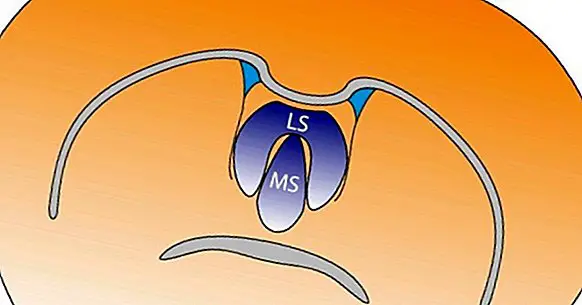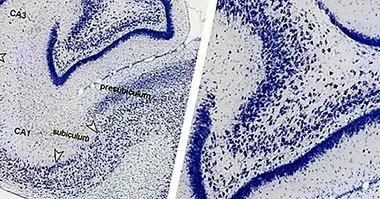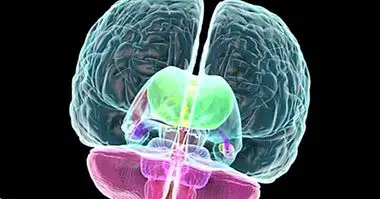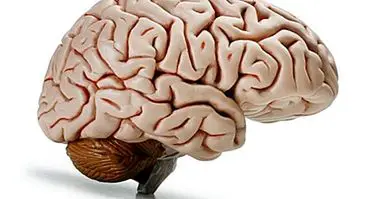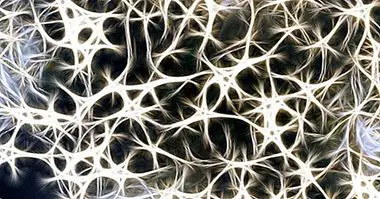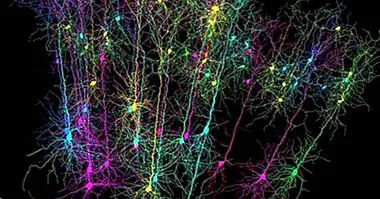Septal nuclei: functions and nervous connections
In the last century, knowledge about the anatomy and functions of the different regions of the brain has increased considerably. Scientific research has allowed us to at least have some clues about how our brain works and, consequently, our cognitive and physiological processes.
In this article we will talk about the functions and nerve connections of septal nuclei , a part of the brain that is essential for memory, emotional expression, pleasure and other processes characteristic of human beings and of many different animals.
- Related article: "Parts of the human brain (and functions)"
What are septal nuclei?
The septal nuclei are a set of subcortical structures that lie between the hypothalamus, the corpus callosum and the septum pellucidum , a membrane that separates the left and right lateral ventricles of the brain. It is also possible to find references to this brain region with the terms "septal area" and "medial olfactory area".
This concept is not used only to refer to the nuclei themselves, but also to a series of closely interconnected regions at a morphological and functional level: the nucleus accumbens (which has a key role in the activity of the neurotransmitter dopamine), the nucleus of the terminal stria and the diagonal band of Broca.
The septal nuclei connect the limbic system with subcortical structures of the diencephalon region, with which allow an exchange of nerve impulses between these . In particular, the subcortical areas to which we refer are the hippocampus, the amygdala and the hypothalamus.
When injuries occur in the septal nuclei, symptoms related to excessive reactivity to food and sexual stimuli appear. This is associated with the connections of this structure with the hypothalamus, which we will discuss in the following sections.
Connections with other brain regions
The septal nuclei they receive afferents from many different areas of the brain . One of the most important connections is that which occurs with the prefrontal cortex; Higher cognitive functions depend on this region, such as working memory, the inhibition of inappropriate behaviors, moral thinking, planning and the creation of expectations.
The arc-shaped structure that is known as fornix connects the septal nuclei with the hippocampus, a core of gray matter essential for the consolidation and recovery of memories, as well as for the perception of space.
The medial olfactory stria, a set of nerve fibers, acts as a link between the septal nuclei and the olfactory bulb, which receives the olfactory information from the sensory receptors located in the olfactory mucosa.
The septal nuclei are also connected to the amygdala , a structure of the limbic system on which emotional learning and memory depend. In this case the grouping of axons that links both regions is called "terminal stria".
On the other hand, this structure is also linked to the hypothalamus, which controls the release of hormones , and to the epithalamus or pineal gland, which produces melatonin. Unlike other routes of which the septal nuclei are part, in this the connection is bidirectional, since there are afferents and eferences in both directions.
Eferences of septal nuclei
The pathways that start from the septal nuclei and project towards the hypothalamus and the epithalamus have different characteristics, despite the anatomical closeness of both structures.
Effusions to the hypothalamus take place through the medial telencephalic fascicle , a set of fibers with a low degree of myelination that reaches the tegmentum of the brain stem. Myelin is a substance that covers the axons of many neurons, protecting them from the extracellular environment and favoring the transmission of electrochemical impulses.
On the other hand, the projections to the epithalamus are made through the medullary stria of the thalamus. When they reach the nucleus of the habenula, a relay takes place in the neuronal transmission; From here, the ephyses travel through the interatrial tract until reaching the interpeduncular nucleus and the brainstem.
Functions of this structure
Research suggests that septal nuclei perform very diverse functions. Two of the main ones seem to be the expression of pleasure responses, including those related to sexuality , and the inhibition of fear sensations, which depend on the amygdala.
It is believed that septal nuclei are involved in the regulation of the activity of the limbic system , as well as in the brain alert. In this sense, its function would allow mental preparation in the expectation that a significant event will occur, favoring the execution of responses to the appearance of it.
On the other hand, this set of nuclei are very important for the codification of new information, and therefore for learning and long-term memory. This function is associated with the connections that maintain the septal nuclei with the hippocampus.
In general, it has been affirmed that the septal nuclei act in compliance with a role of integration of different physiological and cognitive processes , such as emotion, memory, pleasure, alertness, attention and reactivity to external stimuli. This is due to the multiple aferences that this structure receives from other regions of the brain.

